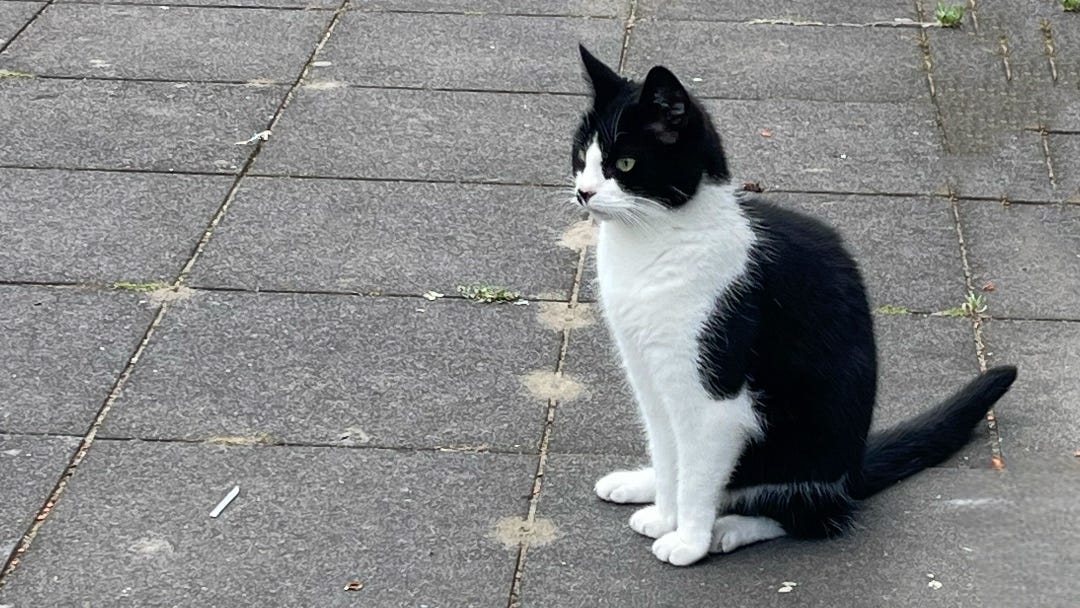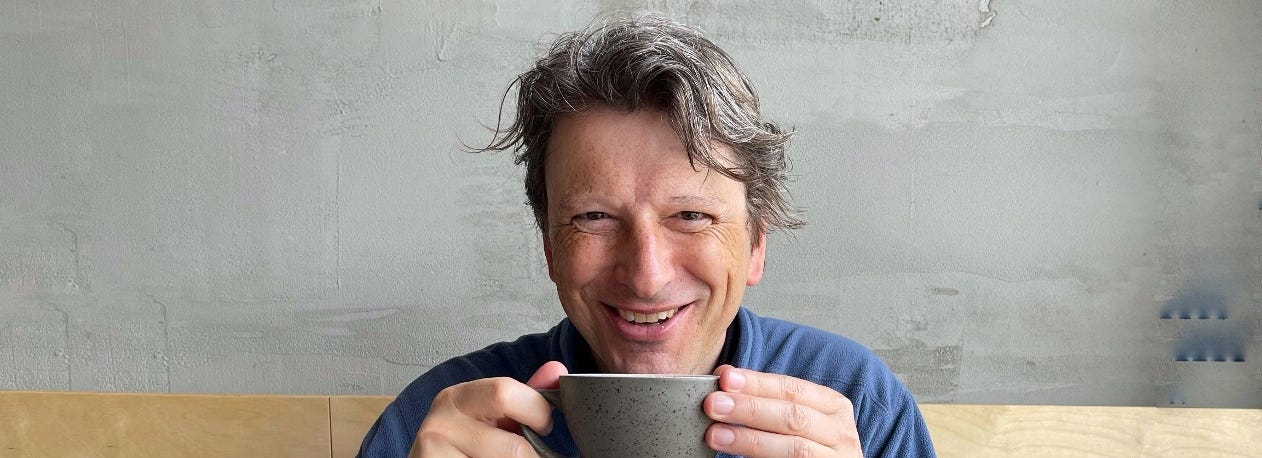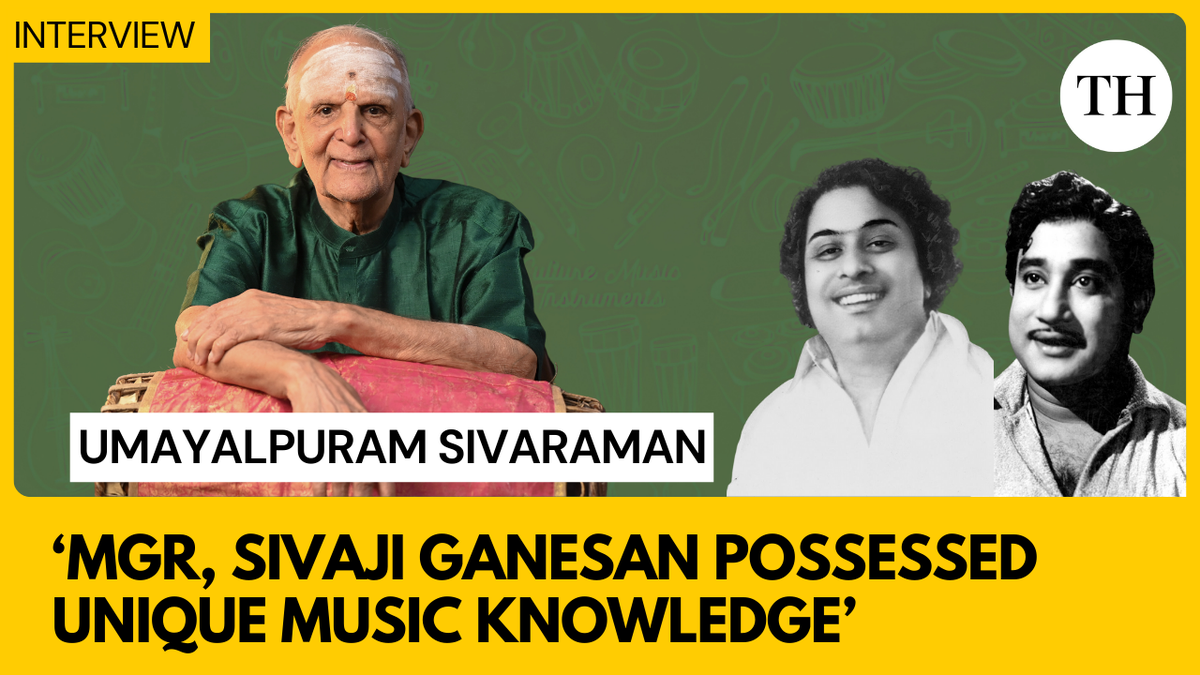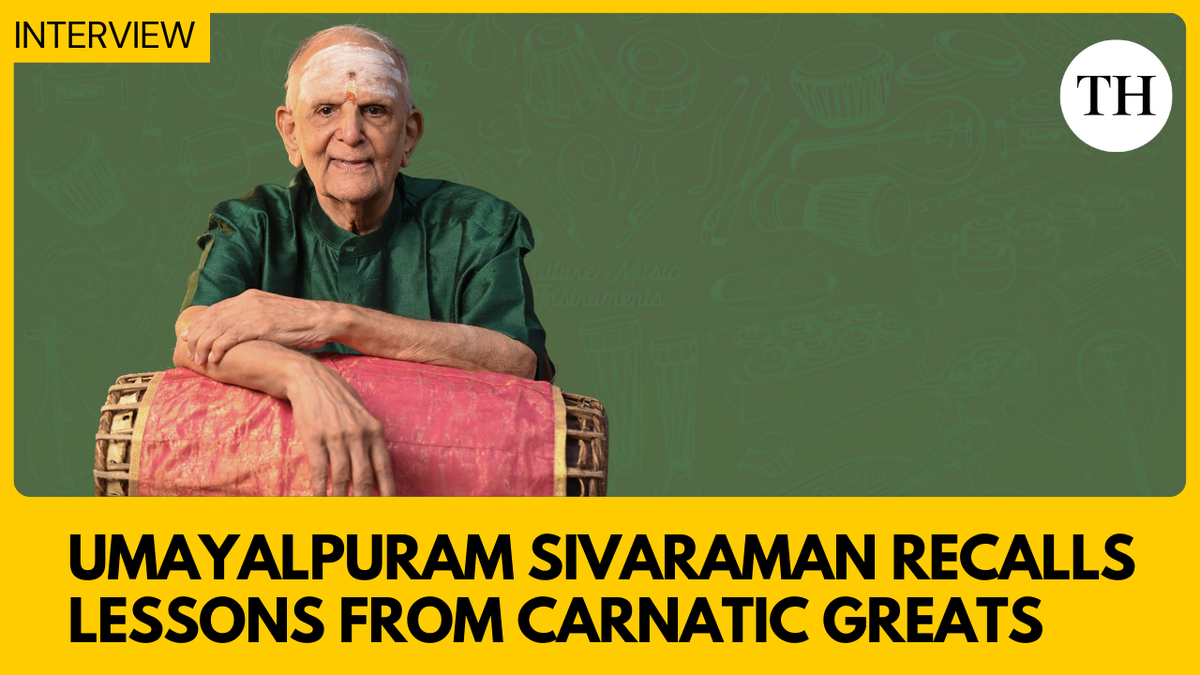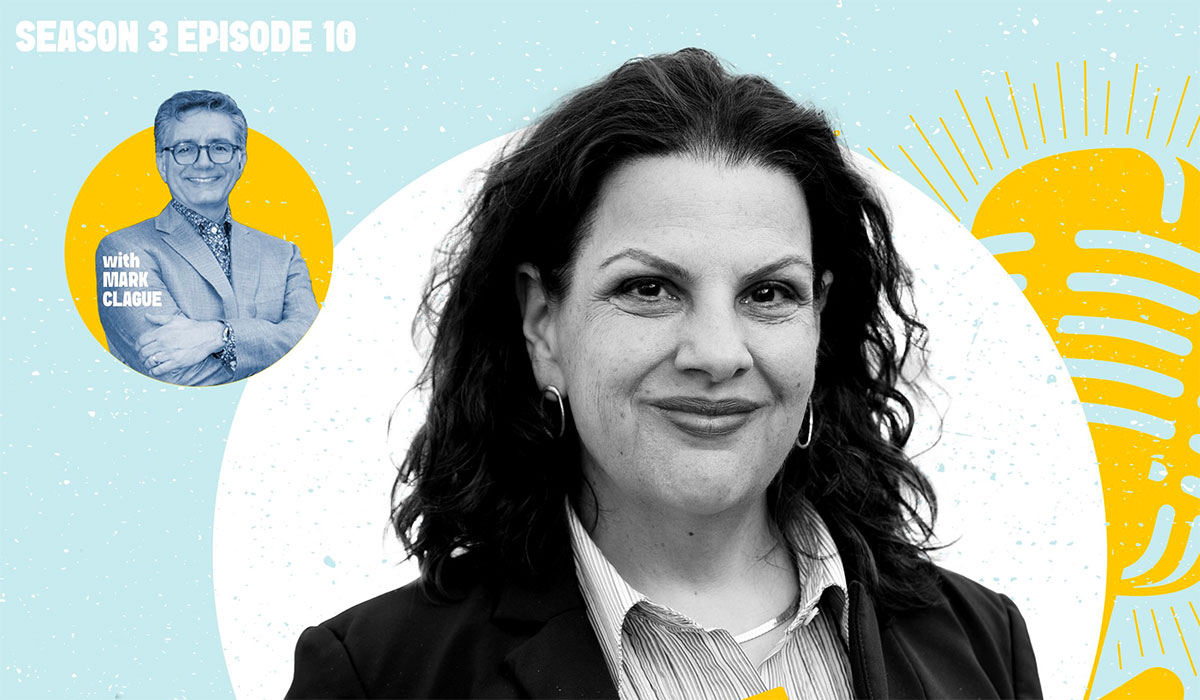The AI Breakthrough That Will Let You Have Real Conversations with Your Pets
Imagine finally understanding what your dog means when they give you that look, or knowing exactly what your cat wants when they meow at 3 AM. Scientists are building AI systems that can help you communicate with your pets, and it's just one of many discoveries I found for you this week.
A comet visiting our solar system has been drifting through space for billions of years before Earth even existed. Think about that for a moment: it was already ancient when our planet was in its early stages of formation. I also found stories about a 33-year-old puffin still successfully raising chicks, researchers finding the lost bow of a WWII warship using coconut logs as repairs, and the largest piece of Mars ever found on Earth going up for auction.
Every day of the week, I search for and publish stories like these. I write about discoveries that provide hope and showcase human progress, scientific breakthroughs, conservation wins, and nature's resilience. While most news sources focus on chaos and conflict, I deliver positive stories that remind you why the world is worth celebrating. From UNESCO protecting fairy-tale castles and ancient megaliths to communities coming together to save historical libraries, from acts of kindness that restore faith in humanity to medical breakthroughs that extend healthy lives, these are the stories that inspire optimism for tomorrow.
Sunday mornings are perfect for stepping back and appreciating the remarkable discoveries happening all around us, and I'm here every day with more stories that inspire hope.
Welcome to all new supporters ☕️
AI researchers explore how humans can "speak" with their pets in the first scientific institution focused on investigating animals' consciousness. The £4 million Jeremy Coller Centre for Animal Sentience, based at the London School of Economics and Political Science (LSE), is set to launch its work on animals on September 30.
The Earth Species Project is already developing AI models that mimic various species to engage in "conversations" with animals. Researchers have trained AI models to distinguish between the sounds of various creatures, including prairie dogs, dolphins, and naked mole rats. The technology analyzes everything from barks and body language to facial expressions.
For global AI usage in animal health, the market is projected to reach $1.68 billion by 2025. I think the possibilities are endless; I would love to know if Luna is genuinely annoyed or just pretending to be dramatic.
A 33-year-old puffin was found on Machias Seal Island, N.B., Canada, by University of New Brunswick researchers in July 2025. The puffin is banded, indicating it is at least 33 years old. This discovery thrills me because puffins typically live only 20-25 years in the wild, making this bird exceptionally long-lived for its species.
What makes this even more remarkable is that this elderly puffin was spotted with a chick, proving that even at 33, this bird continues to successfully breed and contribute to its colony's future. The researchers say the puffin represents the persistence and adaptability that has allowed these distinctive seabirds to thrive in harsh North Atlantic conditions for millennia.
I've always been fascinated by these comical-looking birds that dive into frigid waters with incredible precision. Seeing one individual beat the odds by such a margin gives me hope for the species' resilience.
Britain's oldest World War II veteran, Donald Rose, has died at the age of 110. Rose participated in the D-Day landings on June 6, 1944, and was part of the division that liberated the Bergen-Belsen concentration camp in northern Germany.
Once the UK's oldest World War Two veteran, Mr. Rose was one of the first soldiers to land on the beaches in Normandy during the D-Day landings before fighting in North Africa as part of the illustrious 'Desert Rats.' He was shot in the leg during the D-Day landings.
Now that the oldest survivors of those who stormed the beaches of Normandy to liberate us in Europe from fascism are passing away, it becomes even more crucial to remember them. They were willing to give their lives to prevent us from living under fascism because they understood its awful characteristics. Their understanding of what was at stake makes it extra difficult for them and for all of us to accept today's reality. In several countries, and especially the United States, the majority willingly voted a fascist into power as president.
Rose lived to see freedom triumph but also witnessed democracy under threat again.
Scientists and explorers have found the severed bow of a damaged World War II warship. A team aboard the Exploration Vessel Nautilus found the USS New Orleans 675 meters deep in the Solomon Islands' Iron Bottom Sound in the Pacific Ocean.
In November 1942, the USS New Orleans was hit by a Japanese torpedo during the Battle of Tassafaronga, tearing apart one-third of the ship, including the bow, and killing over 180 people. Despite the severe damage and flooding, the crew managed to keep the ship afloat.
Here's the incredible part: After using an auxiliary craft to reach a nearby island, sailors felled coconut trees and used the logs to fashion a makeshift bow. They then strapped their improvised section to the New Orleans and set course to Australia. However, there was yet another issue: the damaged ship was no longer capable of sailing forward. This meant the crew needed to steer their vessel backward across 1,000 miles of the Pacific Ocean, using those coconut logs as a temporary bow. That's the kind of resourcefulness and determination of the Greatest Generation that built the world we live in today.
Join with 20% off for first year
A child buried in the world's oldest human cemetery had both modern human (Homo sapiens) and Neanderthal characteristics, suggesting she was a hybrid, according to a new study. Researchers have determined that the skull of a female child from a cave in Israel exhibits both Homo sapiens and Neanderthal features.
The researchers used CT scanning techniques to get a new and detailed look at the child's skull, which consists of a broken braincase and jaw. Upon further study, the braincase primarily exhibited modern features typical of Homo sapiens, but the jaw resembled that of a Neanderthal.
This discovery fascinates me because it suggests that our ancestors were much more interconnected than we once believed. Instead of distinct species fighting for survival, early humans and Neanderthals were creating families together, sharing knowledge, and building communities that transcended what we might call species boundaries.
The child was found in what's considered the world's oldest cemetery, suggesting that 140,000 years ago, burial practices were already sophisticated enough to honor the dead regardless of their mixed heritage.
A mystery interstellar object discovered last week is likely to be the oldest comet ever seen, possibly predating our solar system by more than 3 billion years, researchers say. Scientists recently discovered that the "water ice-rich" visitor, named 3I/ATLAS, is only the third known object from beyond our solar system to be spotted in our cosmic neighborhood.
A new insight is that 3I/ATLAS could be around 3 billion years older than our 4.5 billion-year-old solar system and also older than any comet ever observed before. On July 1, the NASA-funded ATLAS (Asteroid Terrestrial-impact Last Alert System) survey telescope in Rio Hurtado, Chile, first reported observations of this comet that originated from interstellar space.
Think about this for a moment: this comet was already drifting through space for billions of years before Earth even formed. Unlike the previous two objects to enter our solar system from elsewhere in the cosmos, 3I/ATLAS appears to be traveling on a steep path through the galaxy, with a trajectory that suggests it originated from the Milky Way's "thick disk," a population of ancient stars orbiting above and below the thin plane where the sun and most stars reside.
While we measure our lives in decades and human history in millennia, this visitor measures its journey in geological eras that predate life itself. It is a fascinating thought that it carries with it the chemical signatures of star systems that died before our sun was born.
In Geneva, artist Saype has created another monumental grassland artwork, titled "Le terrain des possibles," celebrating the Women's Euro 2025 football championship. This ephemeral fresco shows a girl drawing on what appears to be a football pitch, created using biodegradable paint on real grassland. The artwork transcends traditional art forms by blending nature, sport, and human connection into a stunning visual narrative. (📹 saype-artiste)
Saype is known for his large-scale, biodegradable frescoes, which use grass as a canvas to create art that is both monumental and temporary. Located in Geneva, a city known for its international spirit, the fresco celebrates the universal languages of sport and art. Despite our diverse backgrounds, there is always common ground to be found. It is a shared space for play, expression, and humanity.
Saype connects his art with the excitement of WEuro 2025. As the grass fresco will eventually fade, its message, celebrating the possibilities that arise when we come together, endures. I recall seeing videos of similar land art, where artists transform entire landscapes into temporary galleries that exist for only a few weeks before the weather erases them.
Bavaria's fairy-tale royal castles, including Neuschwanstein, Herrenchiemsee, and Linderhof, have been designated as UNESCO World Heritage sites. These magnificent castles in Upper Bavaria attracted over 1.7 million visitors last year alone, including numerous international guests, particularly from the United States and Asian countries. I recall seeing Neuschwanstein when I drove through Bavaria in the years that I lived in Vienna. From the outside, it resembles Sleeping Beauty's castle, which isn't surprising, given that Walt Disney's team was inspired by King Ludwig II's castle design.
France also received recognition as the alignments of the megaliths in Carnac, Brittany, were inscribed on the UNESCO World Heritage List. These 6,000-year-old menhirs represent some of the most important megalithic sites in European prehistory. The Carnac Stones comprise a dense collection of megalithic sites dating from 4500 to 3300 BCE, spanning 28 municipalities and 550 individual sites.
Germany now has 55 UNESCO World Heritage Sites. The World Heritage title brings international attention and cultural prestige, although it also requires effective visitor management to control mass tourism.
Tens of thousands of centuries-old books are being removed from the shelves of Hungary's 1,000-year-old Pannonhalma Archabbey to save them from a beetle infestation that could destroy centuries of history. Restoration workers are pulling approximately 100,000 handbound books from their shelves, carefully placing them in crates for a disinfection process that aims to kill the tiny drugstore beetles that have burrowed into them.
The abbey houses Hungary's oldest collection of books, comprising 19 codices and a complete 13th-century Bible. When employees noticed unusual layers of dust on the shelves, they discovered that holes had been burrowed into the book spines, where beetles had chewed through the paper.
The worrying connection to climate change makes this story particularly relevant. Higher temperatures have enabled the beetles to undergo several additional development cycles annually, more than they could in cooler weather. "Higher temperatures are favorable for the life of insects," said the chief restorer. "So far, we've mostly dealt with mold damage, but now I think more and more insect infestations will appear due to global warming."
To kill the beetles, the crates of books are placed into hermetically sealed plastic sacks from which all oxygen is removed. After six weeks in the pure nitrogen environment, all the beetles should be destroyed. The monks who built this library 1,000 years ago couldn't have imagined that global temperature changes would threaten their manuscripts in the 21st century.
Sotheby's "Geek Week 2025" is auctioning off extraordinary items, including the largest piece of Mars ever found on Earth and a juvenile Ceratosaurus dinosaur skeleton. The Martian meteorite, weighing 54 pounds (25 kilograms), is estimated to sell for between $2 million and $ 4 million. According to the auction house, this red, brown, and gray hunk was blown off Mars by a massive asteroid strike before traveling 140 million miles to Earth, where it crashed into the Sahara Desert in Niger.
The meteorite is about 70% larger than the next largest piece of Mars found on Earth and represents nearly 7% of all Martian material currently on this planet. There are only 400 Martian meteorites out of more than 77,000 officially recognized meteorites found on Earth. A small piece was sent to a specialized lab and confirmed as Mars material by comparing it with the distinct chemical composition discovered during the Viking space probe that landed on Mars in 1976.
The juvenile Ceratosaurus skeleton, discovered in 1996 near Laramie, Wyoming, measures more than 6 feet in height and nearly 11 feet in length. From the late Jurassic period about 150 million years ago, it's estimated to sell for $4-6 million. The skeleton was assembled from nearly 140 fossil bones.
I find it fascinating that you can bid on both a fragment of Mars and the remains of a creature that walked Earth millions of years ago in the same auction room. It's like buying pieces of different worlds and different eras of time itself.
I found ten stories today that made me smile. From AI pet communication to ancient puffins, from cosmic visitors to library conservationists, these discoveries happen while most news focuses on conflict and crisis.
Researchers decode animal languages, artists create temporary masterpieces, and scientists find lost warships and ancient skulls. Each story shows human curiosity and nature's resilience in action.
Your Sunday coffee tastes better with hope instead of headlines. ☕️
Join with 20% off for the first year 😊
Until tomorrow's brew, ☕️
Alexander
You may also like...
Diddy's Legal Troubles & Racketeering Trial

Music mogul Sean 'Diddy' Combs was acquitted of sex trafficking and racketeering charges but convicted on transportation...
Thomas Partey Faces Rape & Sexual Assault Charges

Former Arsenal midfielder Thomas Partey has been formally charged with multiple counts of rape and sexual assault by UK ...
Nigeria Universities Changes Admission Policies

JAMB has clarified its admission policies, rectifying a student's status, reiterating the necessity of its Central Admis...
Ghana's Economic Reforms & Gold Sector Initiatives

Ghana is undertaking a comprehensive economic overhaul with President John Dramani Mahama's 24-Hour Economy and Accelera...
WAFCON 2024 African Women's Football Tournament

The 2024 Women's Africa Cup of Nations opened with thrilling matches, seeing Nigeria's Super Falcons secure a dominant 3...
Emergence & Dynamics of Nigeria's ADC Coalition

A new opposition coalition, led by the African Democratic Congress (ADC), is emerging to challenge President Bola Ahmed ...
Demise of Olubadan of Ibadanland
Oba Owolabi Olakulehin, the 43rd Olubadan of Ibadanland, has died at 90, concluding a life of distinguished service in t...
Death of Nigerian Goalkeeping Legend Peter Rufai

Nigerian football mourns the death of legendary Super Eagles goalkeeper Peter Rufai, who passed away at 61. Known as 'Do...
